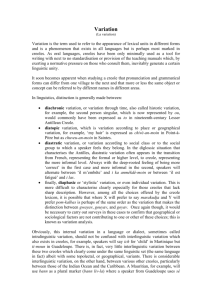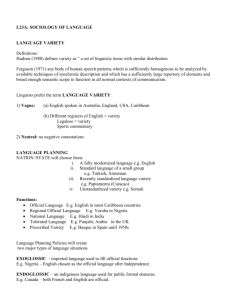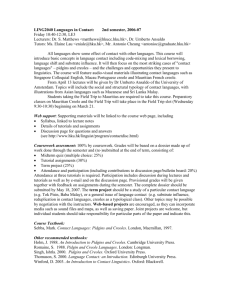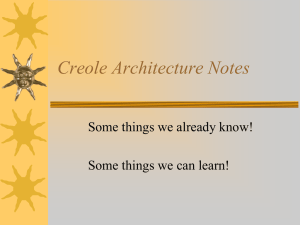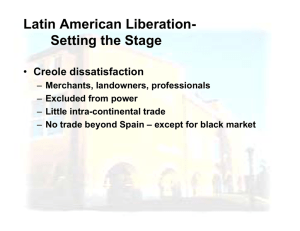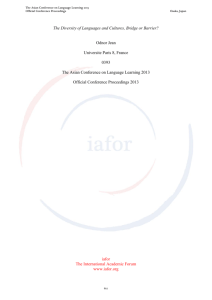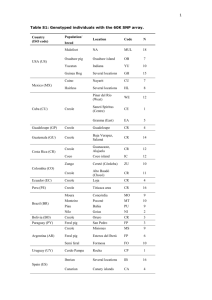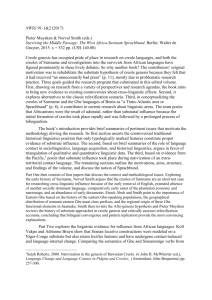SAMPLE ABSTRACT OUTLINE
advertisement
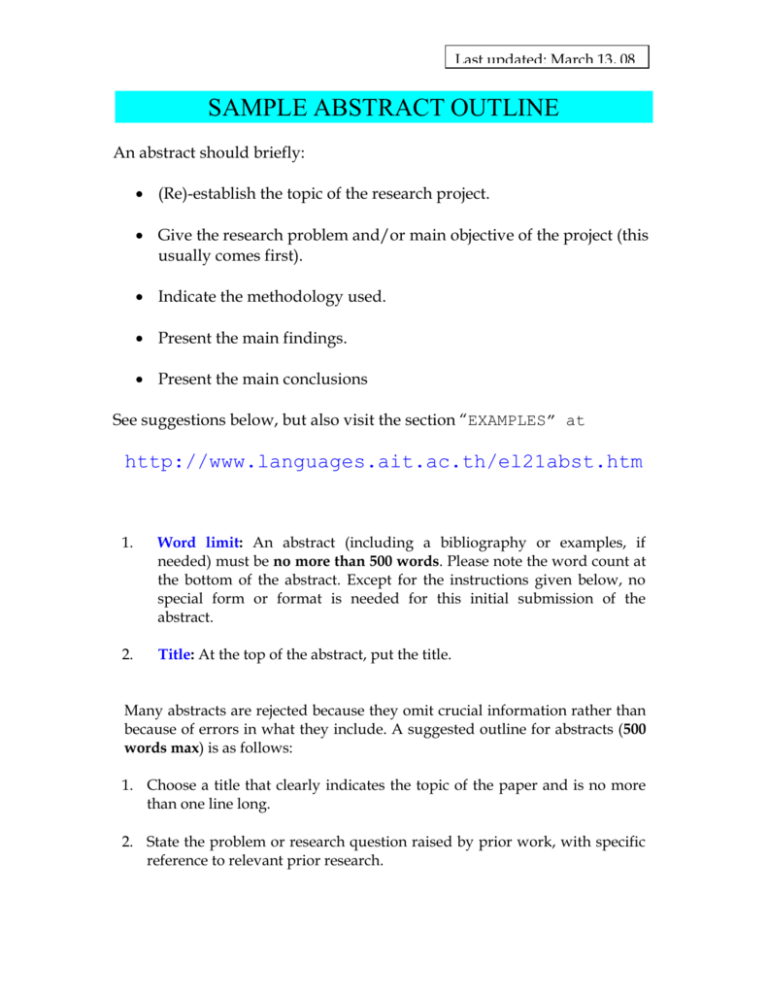
Last updated: March 13, 08 SAMPLE ABSTRACT OUTLINE An abstract should briefly: (Re)-establish the topic of the research project. Give the research problem and/or main objective of the project (this usually comes first). Indicate the methodology used. Present the main findings. Present the main conclusions See suggestions below, but also visit the section “EXAMPLES” at http://www.languages.ait.ac.th/el21abst.htm 1. Word limit: An abstract (including a bibliography or examples, if needed) must be no more than 500 words. Please note the word count at the bottom of the abstract. Except for the instructions given below, no special form or format is needed for this initial submission of the abstract. 2. Title: At the top of the abstract, put the title. Many abstracts are rejected because they omit crucial information rather than because of errors in what they include. A suggested outline for abstracts (500 words max) is as follows: 1. Choose a title that clearly indicates the topic of the paper and is no more than one line long. 2. State the problem or research question raised by prior work, with specific reference to relevant prior research. 3. State the main point or argument of the proposed presentation. 4. Cite sufficient data, and explain why and how they support the main point or argument. Explain abbreviations at their first occurrence. 5. If your paper presents the results of experiments, but collection of results is not yet complete, then report what results you have already obtained in sufficient detail so that your abstract may be evaluated. Also indicate the nature of the experimental design and the specific hypothesis tested. 6. State the relevance of your ideas to past work or to the future development of the field. Describe analyses in as much detail as possible. Avoid saying in effect "a solution to this problem will be presented". If you are taking a stand on a controversial issue, summarize the arguments that lead you to your position. 7. State the contribution to research made by the analysis. 8. While citation in the text of the relevant literature is essential, a separate list of references at the end of the abstract is not always unnecessary. Sample abstracts #1— Area: Linguistics Example of a “longish” abstract Towards an Atlas of Pidgin and Creole Language Structures (APiCS) [name omitted] Max Planck Institute, Leipzig, Germany [e-mail omitted] Creole studies have seen various attempts at explaining the grammatical features of creole languages. Different scholars have variously emphasized the role of substrates, superstrates, and universal features. Many of these claims have been stimulating, but they were often based on a small amount of merely suggestive data. There have been a number of earlier broadly comparative studies, e.g Ferraz (1987) for Portuguese-based creoles, Goodman (1964) for French-based creoles, Hancock (1987) for Atlantic English-based creoles. Holm & Patrick (to appear) (Comparative creole syntax (Battlebridge)) have been the first to carry out a collaborative project: different scholars have decribed 18 creole languages with respect to 97 morphosyntactic features. In this paper, we would like to report on an even more ambitious project, the Atlas of Pidgin and Creole Language Structures (APiCS), which continues this line of collaborative comparative creole work. The goal of APiCS is to gather comparable synchronic data on the grammatical and lexical structures of a still larger number of contact languages, i.e. 60-80 pidgin and creole languages. The data will be presented in the form of maps and as an interactive electronic database. A companion volume will contain sociohistorical and grammatical sketches of each language. This publication will be a comprehensive and authoritative reference work on creole language structures bringing together the expertise of dozens of creolists from around the world. APiCS will thus serve as an invaluable tool for teaching and research, making systematic data on creole languages readily available for a wide range of research questions (diachronic theories of creolization, uniformity and diversity of creoles, general properties of language contact, typological characteristics of contact languages). The language set should contain not only the most widely studied Atlantic and Indian Ocean creoles, but also less well known creoles from Africa, Asia, Melanesia, and Australia. Each language will be the responsibility of a single author (or team of authors). On the maps, each language will be represented by a dot. The data base will consist of 150-200 structural features which will be drawn from all areas of language structure: phonology, morphology, syntax, lexicon. APiCS will be published as a two-volume work: The first volume will contain the descriptions of the structural features and the maps, while the second volume will consist of concise prose descriptions of the sociohistorical context of each language, as well as synchronic grammatical sketches highlighting the major distinguishing features. In addition, the first volume will be accompanied by a CD-ROM containing the database in electronic form together with an interactive map-generating and search tool that will allow various research questions to be addressed. The electronic version will also contain sound files: For each language users will be able to listen to a short spontaneous narrative text that is glossed and translated. Even though the project is still in its initial phase, about 40 experts of particular pidgins and creoles have committed themselves to contributing to this ambitious collaborative work. #2— Area: Geography (mapping) Example of a “short” abstract SHALLOW WATER MAPPING OF THE HAWAIIAN EEZ [name omitted] University of Hawaii, Pacific Mapping Program Honolulu, Hawaii, U.S.A. [e-mail omitted] The principal objective of this paper is to demonstrate the capability in Hawaii to conduct near shore mapping, accurately and inexpensively. The availability in Hawaii of a commercial and technical service to provide shallow water seafloor maps and ocean bottom imaging will enable high-quality monitoring of waste dumps, outfalls and pipelines, and will create a successful service here and, most likely, throughout the Pacific. The various City and County units and State departments will make wide use of the new mapping and imaging capability, and the Federal agencies will benefit from the updated hydrographic maps and images. Mapping has always been a tedious and compromising task which has been improved rapidly in the past with the use of laser, GPS system, high performance computer and digital data processing techniques. The Westinghouse SM2000SS laser line scanner (LLS) readily provides ocean bottom imaging with very high resolution. The LLS is integrated with GPS receivers to provide accurate position of the survey. The first survey was conducted over the Kihei Pinnacle, near Maui. For more “EXAMPLES” and detailed discussion components of good abstracts, visit of key http://www.languages.ait.ac.th/el21abst.htm
